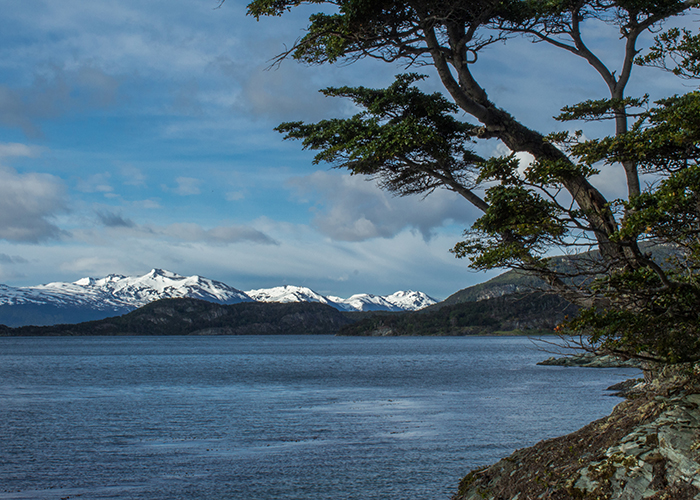 Previous Day |
Stop 3: Tierra del Fuego National Park, Argentina |
 Next Day |
¡Merienda, todos!
I have a boat to catch this afternoon, but first, I’ve been invited to tea by some extraordinary beavers! They are the southernmost beavers in the whole world, and they make their home in Tierra del Fuego National Park! Luckily, my host, Carlos, used to be a park ranger, or guardaparque, here, and he graciously offered to drive me to tea!
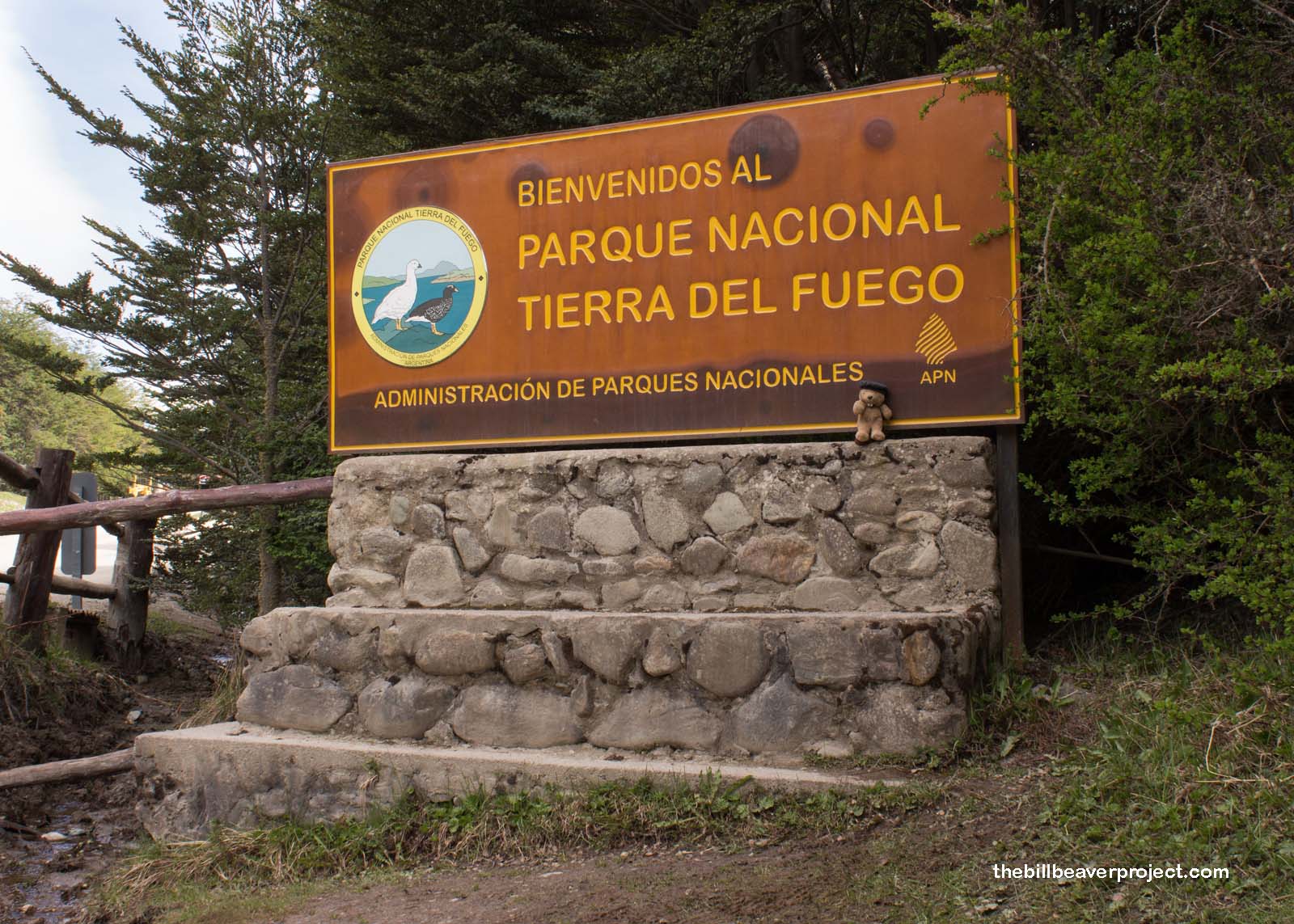 |
First, though, Carlos wanted to show me around the park a bit, so we started by walking along the coast of Ensenada Zaratiegui, lined with hardy trees called guides. Carlos taught me about the different types of edible berries here, like the chair and the califate, which is a lot like a blueberry and has a whole national park named after it! This was a really beautiful, rocky coastline, cold and a little intimidating, but beautiful nonetheless!
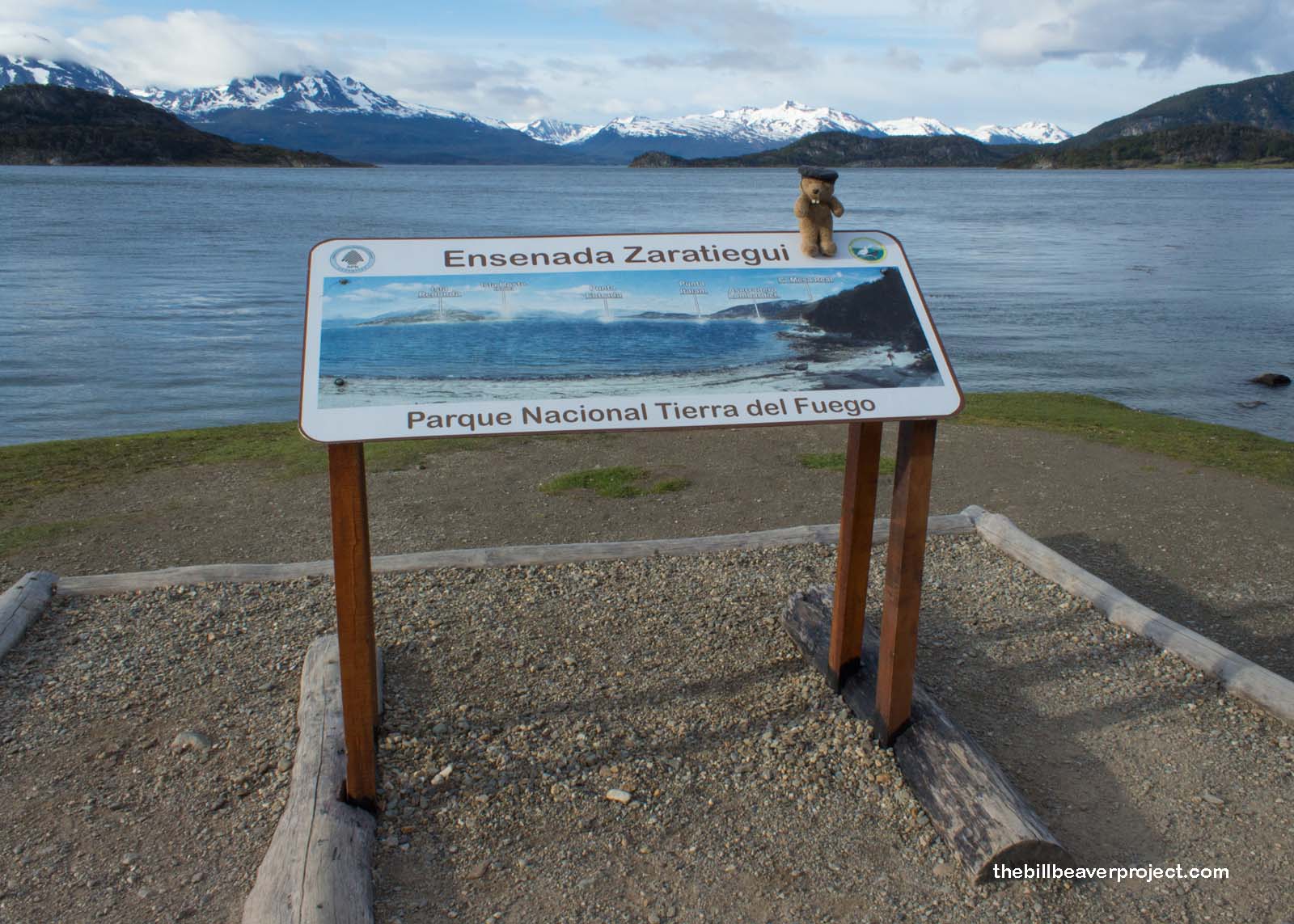 |
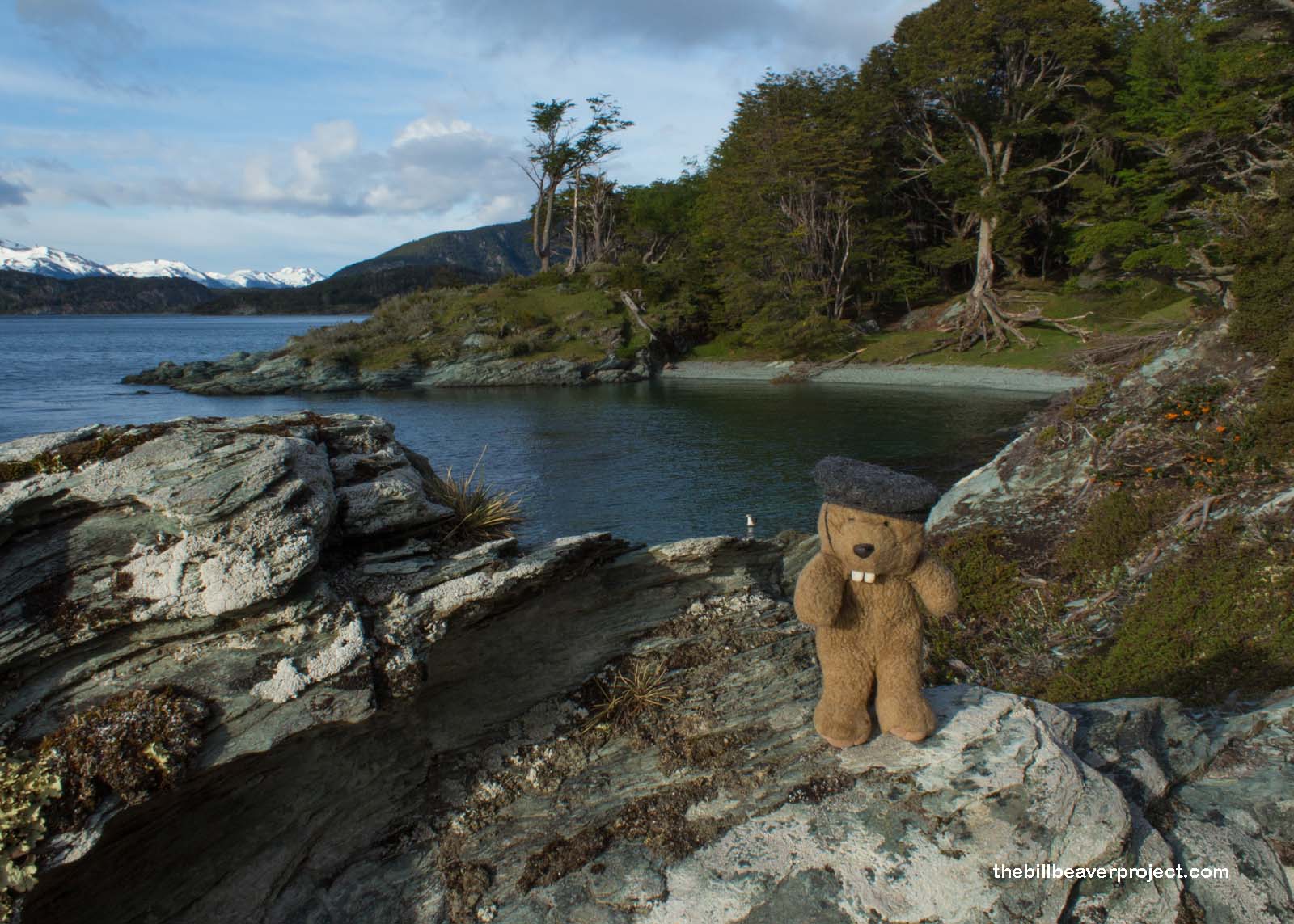 |
Our next stop was the Rio Pipo, past the train tracks that once brought Ushuaian prisoners to the lumber forests but now brings tourists into the park. We saw waddling upland geese and ibis with black wattles, as well as three feral horses that had been released into the park years before and never rounded up. I thought that was odd in a national park, but Carlos did not seem bothered by it. He showed me the sign he had hand-carved ahead of the waterfall. In fact, he hand-carved a large number of the signs in this park!
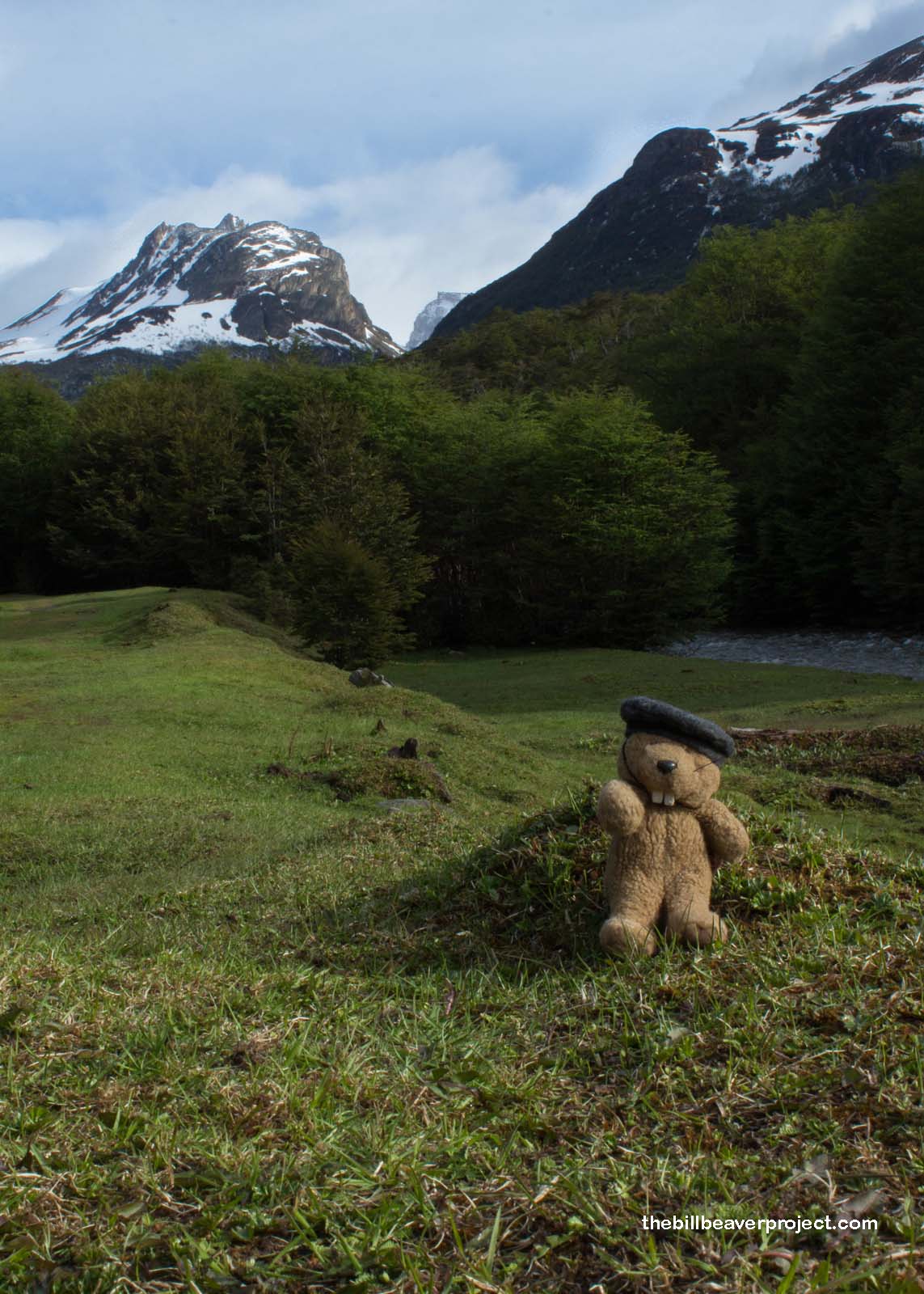 |
 |
Everything was so green along this trail, and mountains looked so remote and mysterious, especially as the clouds started rolling in! The rain wasn’t supposed to come in until afternoon, but in this far-flung edge of the world, nothing is for sure! So, we spent a little time enjoying the Cascada Pipo before continuing to our next destination.
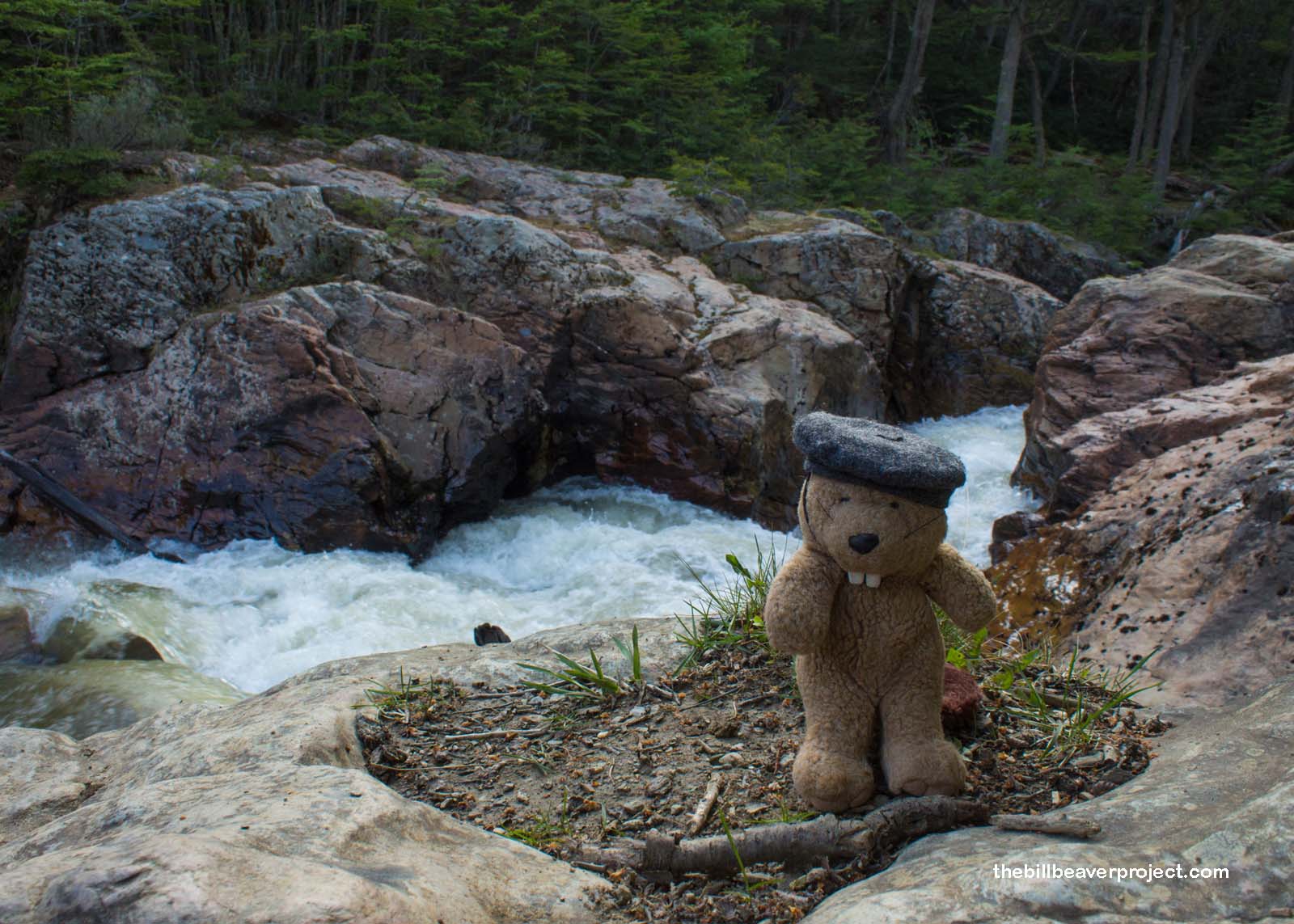 |
We got stuck behind some road construction with just enough time for me to sneak up to a viewpoint of the Beagle Channel, the waterway through which Charles Darwin passed on his grand voyage of exploration. I will be going the opposite way through that Channel tonight!
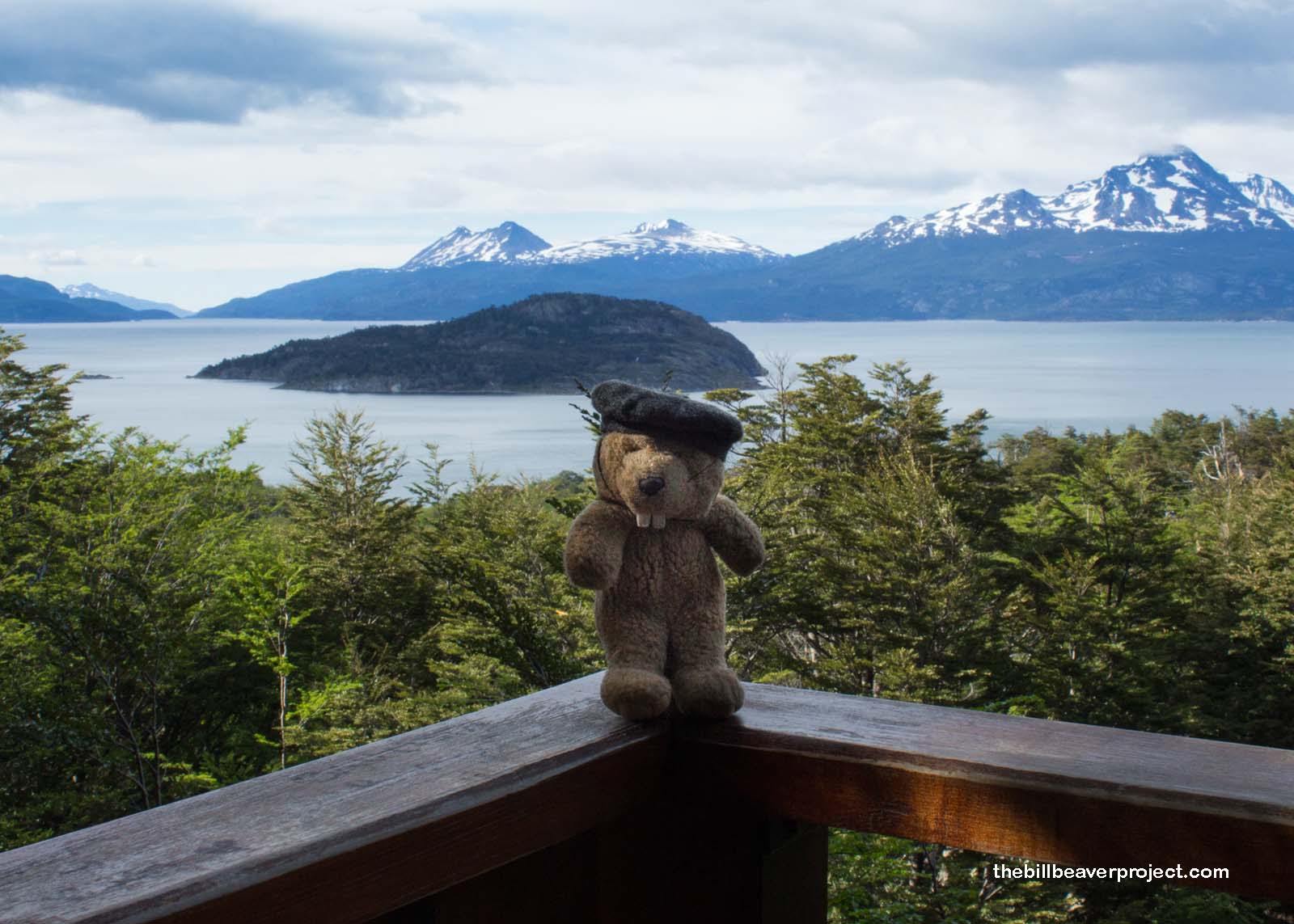 |
The wind picked up ahead as we arrived on the shore of Lago Roca, where tall lenga trees had been bent by mighty winds but happy upland geese waddled around without a care! The storm loomed up, whipping the waves and blowing the snow off the peak of Cerro Condor. This is a magnificently stark and resilient place in a near constant state of being buffeted by the southern gusts!
Carlos and I stopped at the Alakush Visitor Center, named after a type of duck in the park, and learned about the Yámana people, who spent so much time hunting in boats that their legs atrophied and their arms were much longer and stronger than those of the Europeans! There was a really neat display on indigenous boat designs from around the world; boats in the southern hemisphere all had a very similar shape, while northern hemisphere boats could not have been more different. I wonder why!
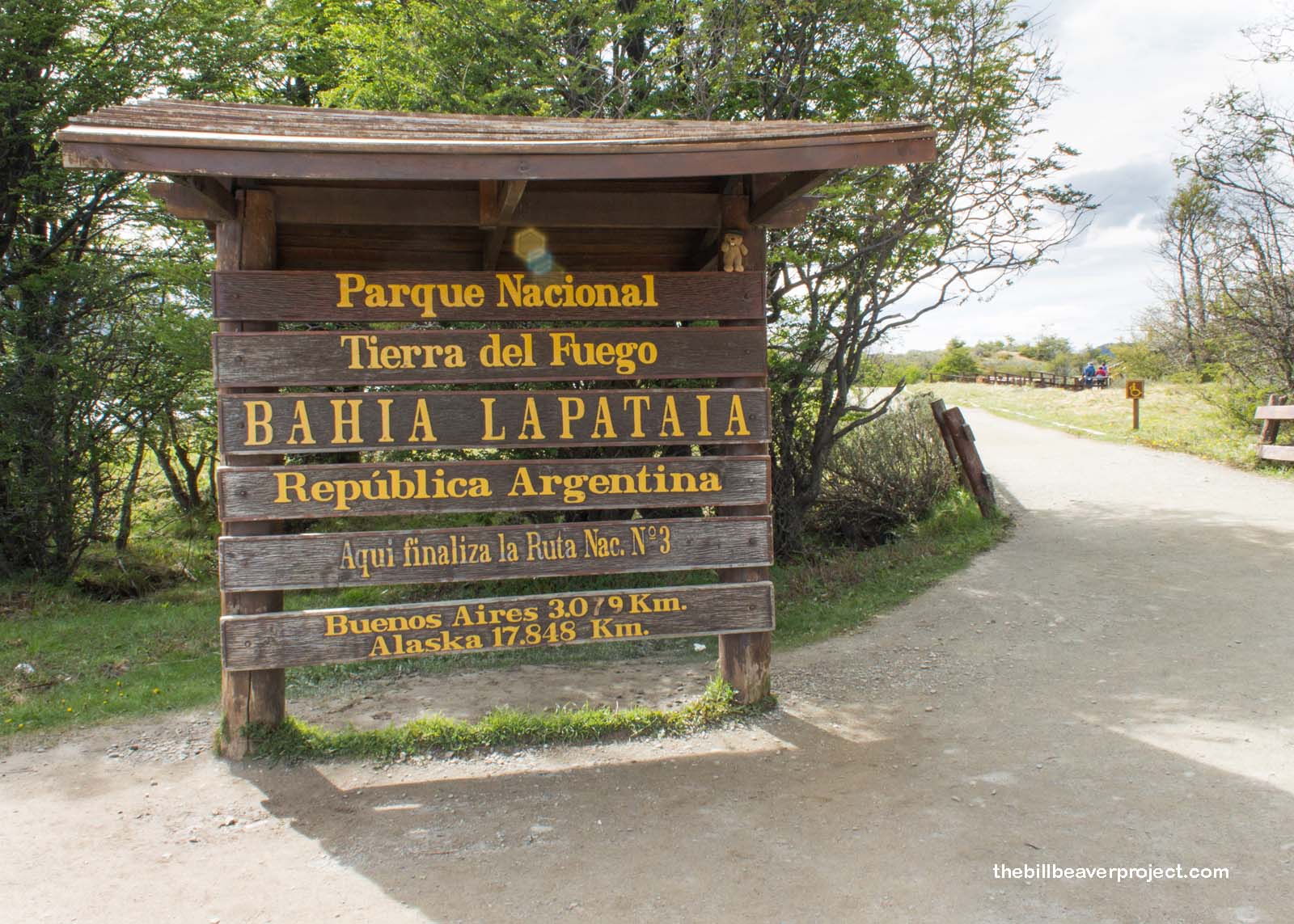 |
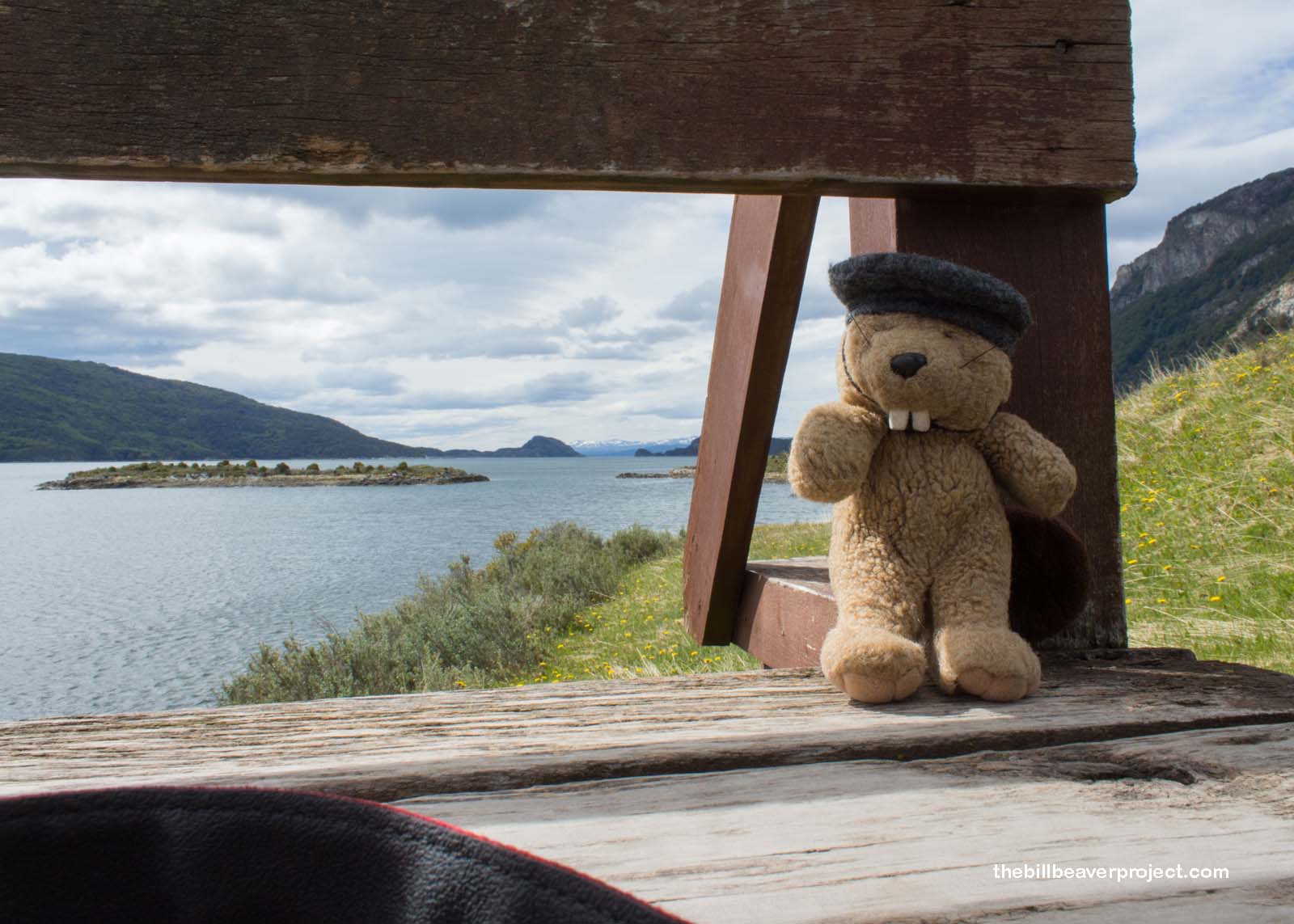 |
Before stopping by to see the beavers, we visited another of Carlos’ famous signs at Bahia Lapataia, the end of the Pan-American Highway, a network of roads that starts 11,088 miles north in Prudhoe Bay, Alaska! That would be one epic road trip to take! I wonder how long it would take… Anyway, this dandelion-covered docking area is a major destination for kayakers, on the edge of the Beagle Channel, and for that reason, we didn’t stay long. The tour buses were pulling in, and neither Carlos nor myself are very fond of crowds!
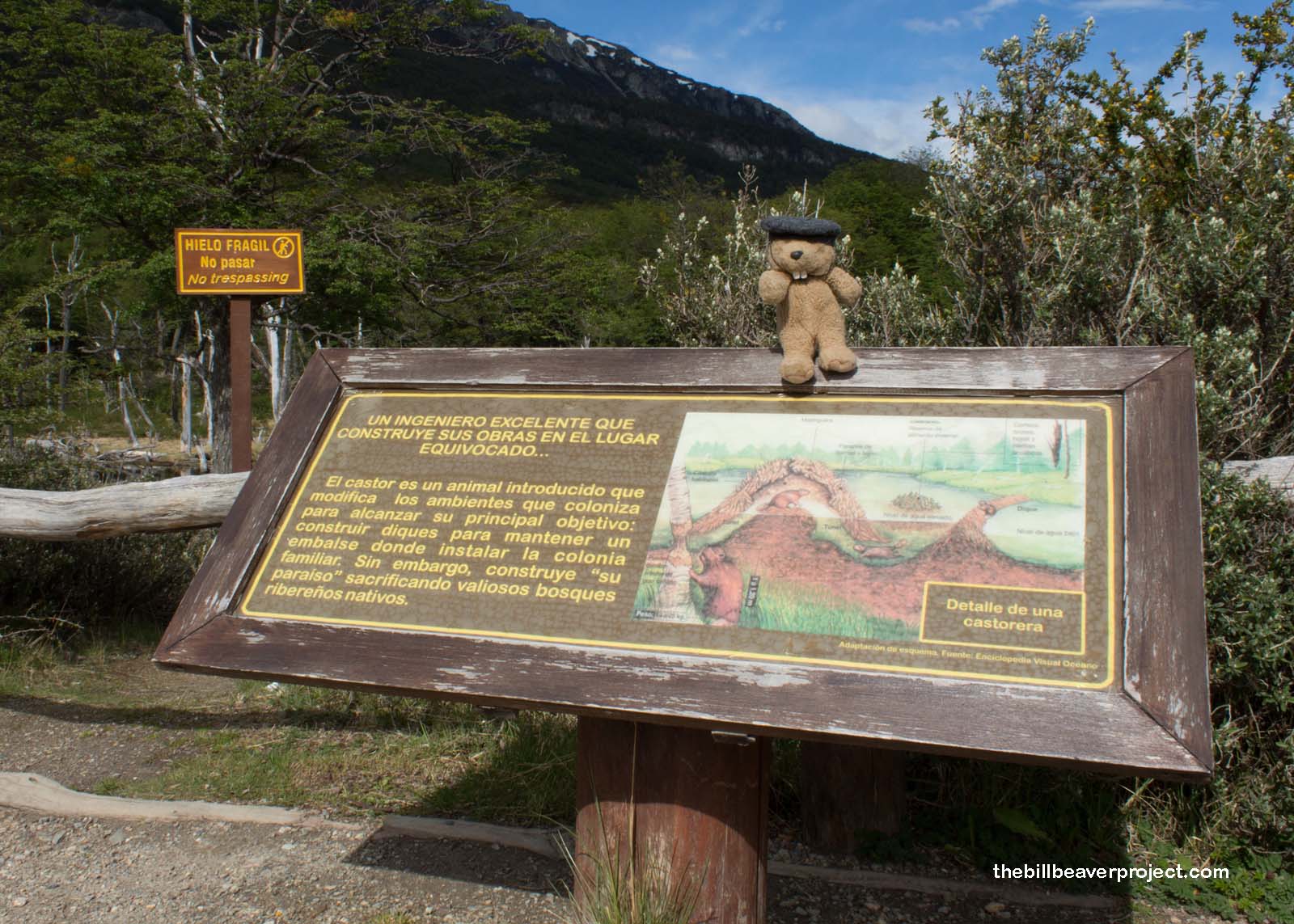 |
So we returned to the Castorera, or beaver dam, up the road. Carlos offered to wait an hour in the car, but he reminded me there was a boat to catch later. So I went to see what these Fuegian beavers were about. Beavers aren’t native to Tierra del Fuego. They were brought here from Canada in 1946 to start a fur industry, but when that failed, they did very well here without predators, so well, in fact, that they’ve caused a lot of damage!
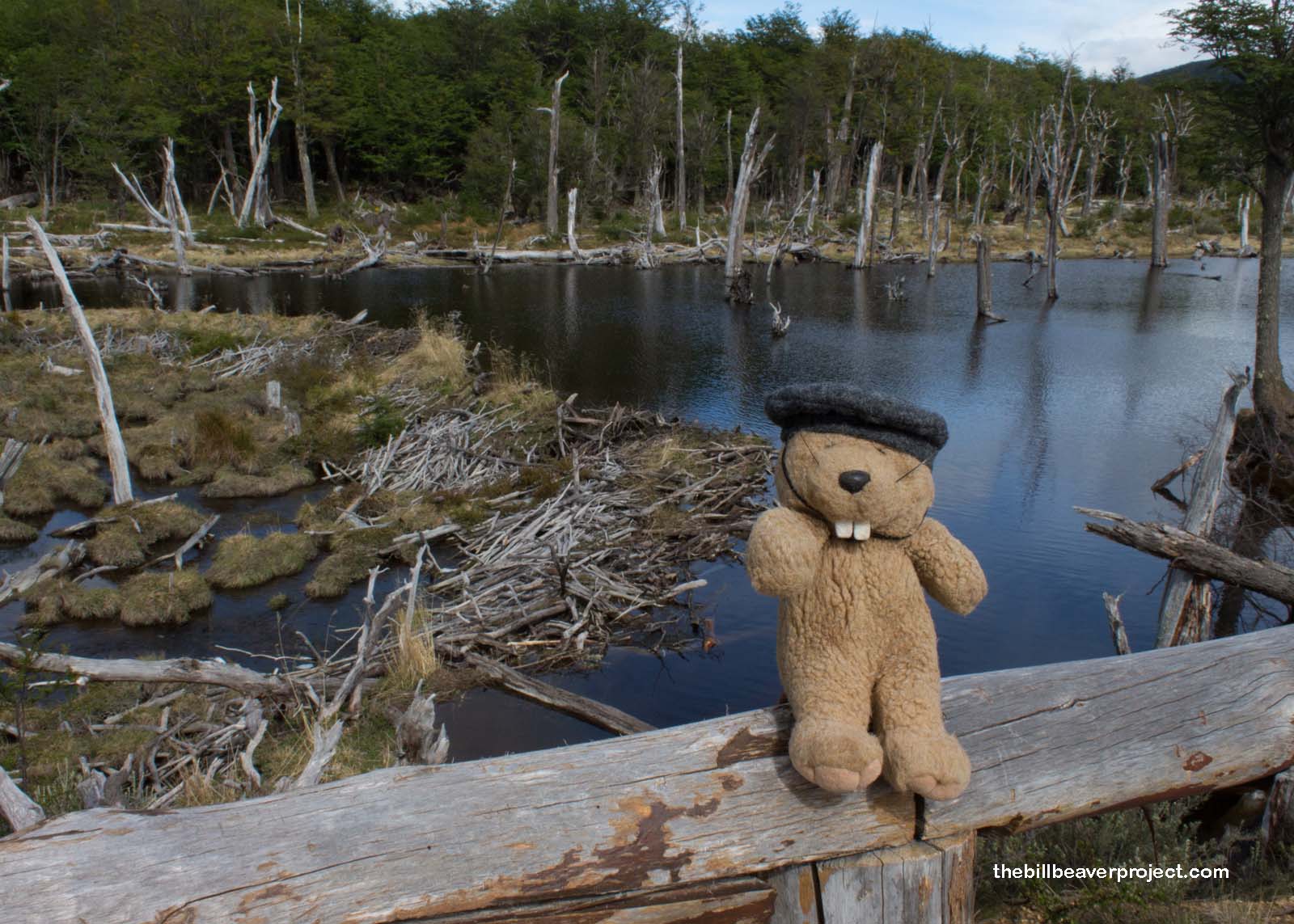 |
As beavers, we can’t help ourselves when there is something to build, and these beavers have dammed up a lot of creeks and flooded forest land to build their homes. It’s a major problem for the rest of the ecosystem, and a lot of guaraparques have to decide how many beavers to trap and how many to keep because they draw tourists!
These beavers were named Roberto and Marta, two kindly older beavers who had lived in this finely built lodge a long time and only spoke Beaverish! It’s been years since I spoke Beaverish, and it was really tricky to remember the words and understand their Canadian accents. But we made do, and they made me some yerba mate with lenga sticks and califate berries! It was very delicious.
I asked them if they had ever met a wandering beaver named George, but they had not. They had a kit named Jorge a few years back, but he had disappeared, whether on an adventure or into a guardaparque trap. No one knew. I could relate, and we had a good moment. I really don’t think the beavers should be killed here. They never asked to be here, and they’re only doing what they do naturally. I wonder how much it would cost to return them to Canada!
No matter how you look at them, I thought these beavers were great characters! I thanked them for their hospitality and wished them very well before hustling back out to meet Carlos and head into town. The ship to Antarctica was about to come in!
Hasta el Sur!

 Previous Day |
Stop 3: Tierra del Fuego National Park, Argentina |
 Next Day |
